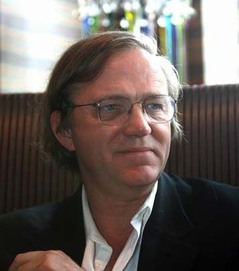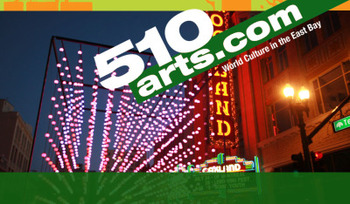 What do you do if you’re an artist, a museum, a theater or any other cultural creator/presenter in a locale that lives in the shadow of a bigger city? I’m thinking here of Westchester County, New York, for example, or Newark.
What do you do if you’re an artist, a museum, a theater or any other cultural creator/presenter in a locale that lives in the shadow of a bigger city? I’m thinking here of Westchester County, New York, for example, or Newark.
Four cities in the East Bay area of northern California (Berkeley, Emeryville, Oakland, and Richmond) have joined in a response: Their most recent effort is the creation of an arts web portal called “510 Arts.com” with the motto “World Culture in the East Bay.” They hope to bring artists and arts institutions together, market them, increase their visibility, and use them as catalysts for economic development. There’ll be events listings, online exhibits and social networking opportunities for artists.
As the San Francisco Chronicle reported last week:
 The portal received support from Leveraging Investments in Creativity and the community foundations in San Francisco, Irvine, Hewlett and the East Bay. LINC is “newish” to me; I’ve seen it mentioned before but… It describes itself as “a ten-year national initiative to improve the conditions for artists working in all disciplines.”
The portal received support from Leveraging Investments in Creativity and the community foundations in San Francisco, Irvine, Hewlett and the East Bay. LINC is “newish” to me; I’ve seen it mentioned before but… It describes itself as “a ten-year national initiative to improve the conditions for artists working in all disciplines.”
This can only be a good thing — unless it raises false expectations.
Regional collaboration is the way to go for many arts groups, I think. Last year, I wrote here about the Fairfield/Westchester Museum Alliance. There are many others, I’m sure. The 510 Arts claims its portal is unique — I’m not sure about that. What about the Greater Philadelphia Cultural Alliance (which btw released ten findings from its studies on cultural engagement last fall)?
No matter. At least they are taking the initiative, instead of moaning about economic conditions.

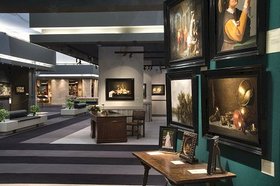
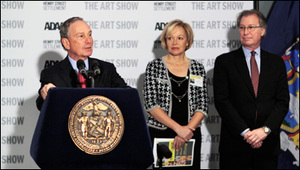 You can tell this is important because Mayor Bloomberg got into the act. This morning, at a press conference, he threw out some numbers:
You can tell this is important because Mayor Bloomberg got into the act. This morning, at a press conference, he threw out some numbers: 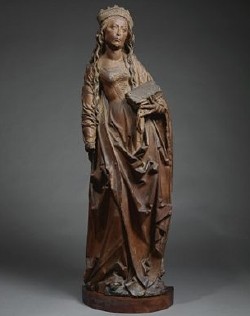 He agreed to talk, the Times said, partly because he is controversially curating Skin Fruit, the show at the New Museum drawn from the collection of Dakis Joannou, a trustee. And he agreed to discuss his own collecting, a topic many people have been wondering about for years — partly because he’s been buying Old Masters and 19th Century works, rather than contemporary. He paid $6.3 million at Sotheby’s for Tilman Riemenschneider’s beautiful limewood carving of St. Catherine, circa 1505, at right, for example. He also purchased a nude by Courbet, 1886, at Sotheby’s for $3.2 million, which he lent to the Metropolitan Museum’s 2008 Courbet exhibition.
He agreed to talk, the Times said, partly because he is controversially curating Skin Fruit, the show at the New Museum drawn from the collection of Dakis Joannou, a trustee. And he agreed to discuss his own collecting, a topic many people have been wondering about for years — partly because he’s been buying Old Masters and 19th Century works, rather than contemporary. He paid $6.3 million at Sotheby’s for Tilman Riemenschneider’s beautiful limewood carving of St. Catherine, circa 1505, at right, for example. He also purchased a nude by Courbet, 1886, at Sotheby’s for $3.2 million, which he lent to the Metropolitan Museum’s 2008 Courbet exhibition.